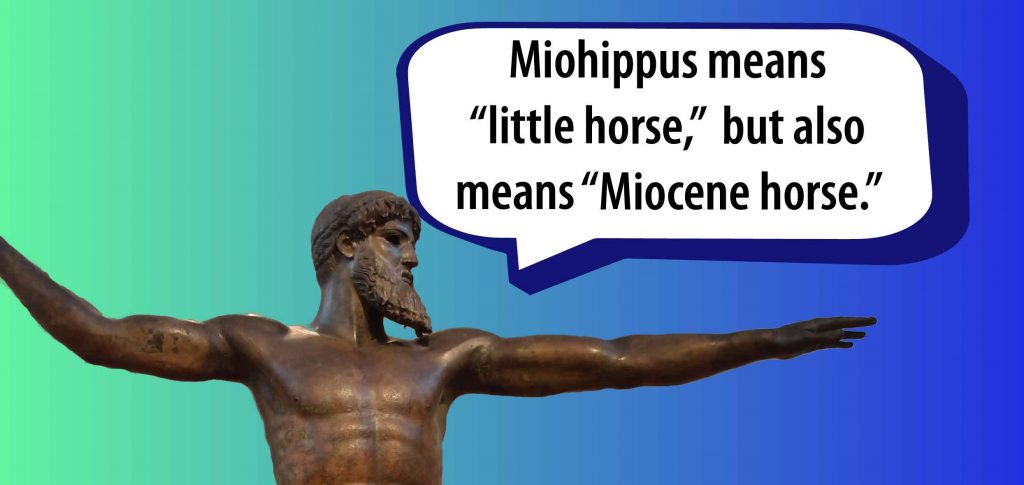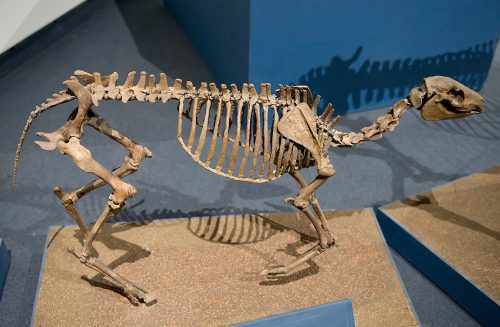Species of Miohippus gave rise to the first burst of diversity in the horse family. Until Miohippus, there were few side branches, but the descendants of Miohippus were numerous and distinct.
During the Miocene, over a dozen genera existed. Today, only one genus of horses survives: Equus.
 Where & When?
Where & When?
Fossils of Miohippus are found at many Oligocene localities in the Great Plains, the western US and a few places in Florida. Species in this genus lived from about 32-25 million years ago.
Eohippus lived in the Eocene, so Miohippus lived in the Miocene, right?

Sorry! Just as things were beginning to make sense we have to tell you that Miohippus was a common horse in the Oligocene.
Professor Marsh, who also named eohippus and Pliohippus, was not trying to confuse us when he named Miohippus in 1874. At the time, he believed that these fossils came from Miocene rocks. More recent work indicates that nearly all species of Miohippus, in fact, lived in the Oligocene. Though the name is somewhat misleading, we are stuck with it.